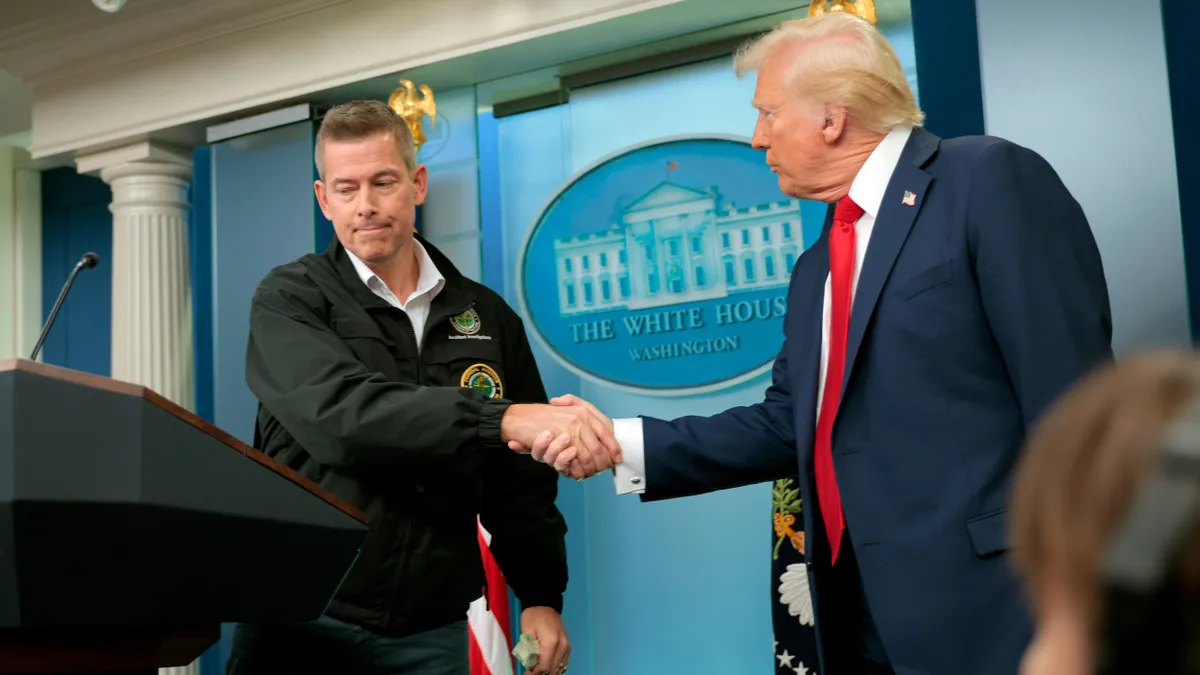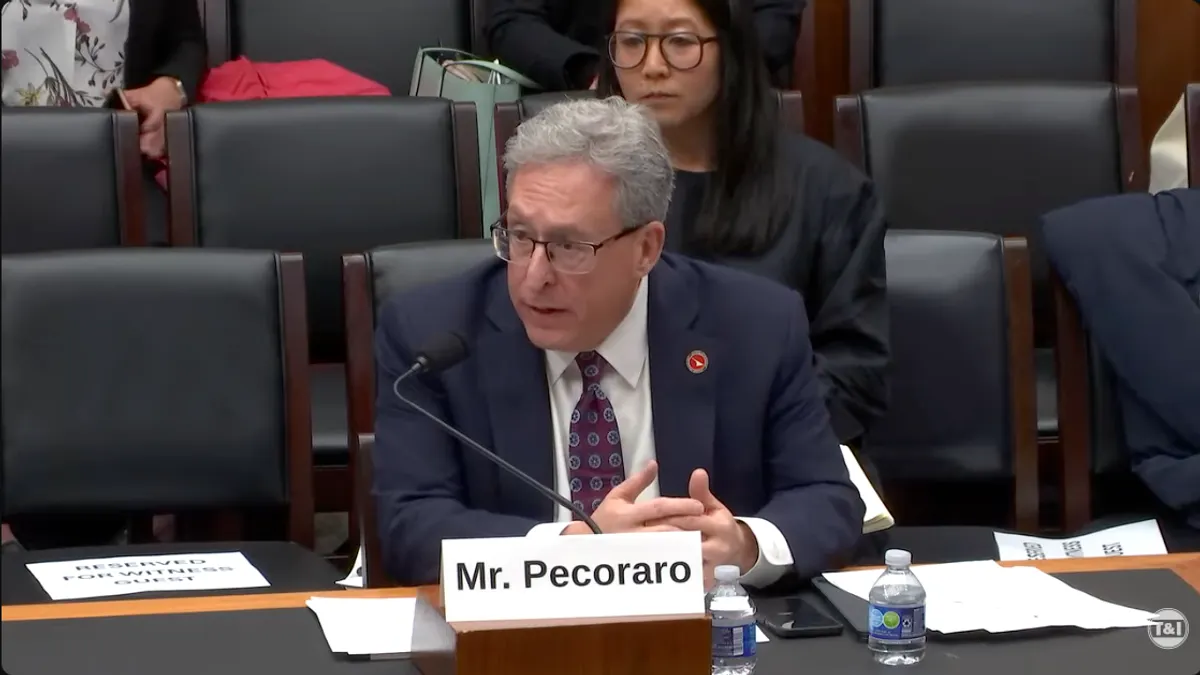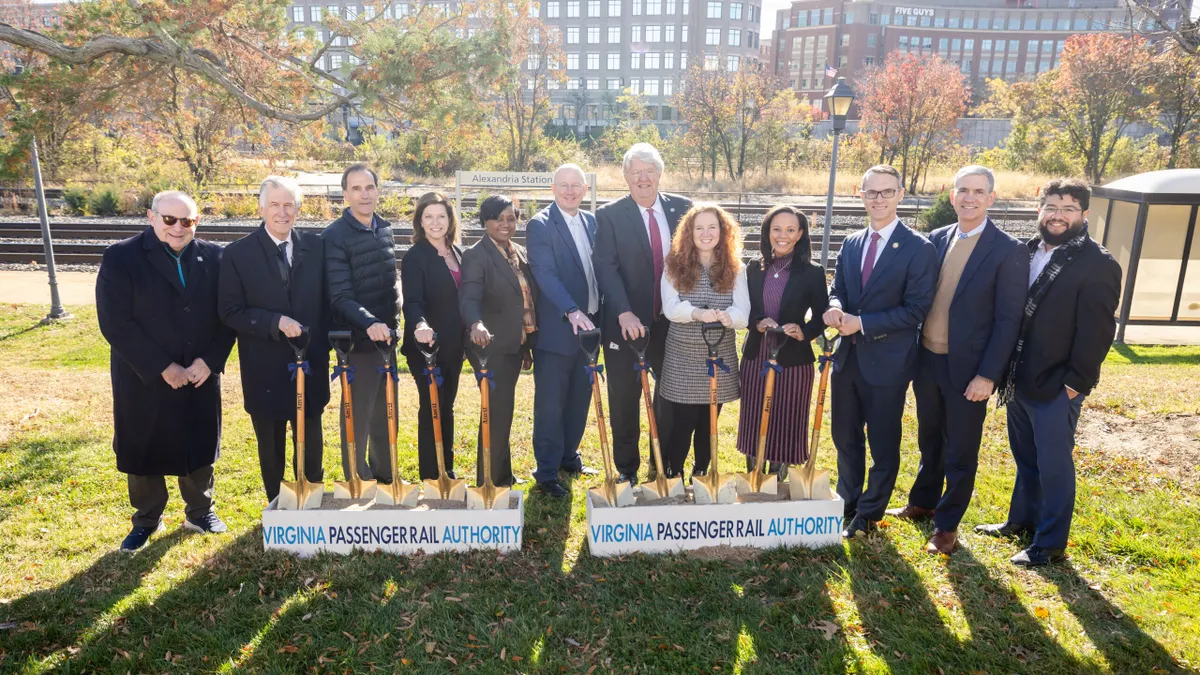Editor's note: This article was originally published in American City & County, which has merged with Smart Cities Dive to bring you expanded coverage of city innovation and local government. For the latest in smart city news, explore Smart Cities Dive or sign up for our newsletter.
Fuel storage tanks serve many applications in the public sector, says Hughes Tank Co. CEO Randy Gonzalez. “Whether for military bases, emergency response units, municipal fleets or other government operations, our tanks ensure safe, efficient and long-term fuel storage. With durable construction and compliance with industry regulations, our solutions support the critical fuel needs of government entities nationwide.”
The Venus, Texas-based firm produces above-ground and underground storage tanks and has a long track record working with local governments. “Over the past year, we have successfully replaced multiple large fuel storage tanks for major cities, including UL 142, UL 2085 Fireguard, Flameshield, F921 and ACT 100 U tanks.” Hughes Tank assisted in critical hurricane relief efforts last year following Hurricanes Milton and Helene, sending more than 100 tanks to the Carolinas and Florida.
The company offers a variety of tanks, including double-walled and environmentally compliant models. Gonzalez adds: “Our tanks range in size from 150 gallons to 50,000 gallons, with multi-compartment options available to maximize space and accommodate multiple fuel types efficiently.” The following link spotlights the company’s product offerings.
The firm’s tanks serve a variety of applications in local government, including generator backup (for city/county buildings, data centers, county hospitals, etc.), fleets (car, truck, heavy equipment, other vehicles) and grounds maintenance.
Gonzalez says there are a few best practices local governments should follow as they plan to acquire fuel storage tanks. He says it’s important to check with local city fire marshal requirements specific to their area. “The fire marshal is in charge of tank safety specifics, size and type of tanks. UL 142 Double Wall, UL 2085 Fireguard, and Flameshield are accepted types of tanks for safety. UL 2085 Fireguard is impact- and ballistic-resistant and has a fire rating.”
He adds that the allowable tank size and type for installation are determined by local fire marshal regulations and city codes. “Typically, one tank is installed at each site. Most tanks are securely installed on-site with protective bollards for safety and are typically positioned out of clear view for added security and aesthetics.”
Gonzalez notes that tank requirements vary by location, and certain restrictions may apply. “In some cases, the allowable tank size is limited. Additionally, proximity to schools, hospitals or other areas may impact placement and regulations. What’s more, familiarity with the U.S. Environmental Protection Agency’s above-ground storage tanks (AST) requirements is helpful when placing orders.”
Here’s one additional regulatory standard that covers tanks, according to Gonzalez: “The NFPA 30, Flammable and Combustible Liquids Code, published by the National Fire Protection Association, is enforced nationwide.”
Gonzalez urges government staffers to regularly test fuel and equipment connected to the tank. “This will help maintain optimal performance and ensure a tank’s full lifespan, which typically ranges from 20 to 30 years.”
The public sector, Gonzalez believes, wants green and environmentally safe infrastructure and products. “Governments are increasingly prioritizing environmentally safe and sustainable options when purchasing maintenance equipment and supplies, including fuel tanks. Agencies across the U.S. seek fuel storage solutions that comply with environmental regulations, reduce spill risks and minimize their carbon footprint.”
He says his industry offers products that preserve the environment. “To meet these needs [in government], modern fuel tanks often include features like double-wall construction for leak prevention, overfill protection valves and advanced containment systems. Additionally, some managers explore alternative fuel storage solutions, such as biodiesel or renewable fuel-compatible tanks, to support sustainability initiatives. By investing in eco-friendly fuel storage options, government entities can enhance environmental compliance and reduce long-term maintenance costs.”
Gonzalez adds that his firm’s tank-construction system is helping save the planet. “Our production process maximizes the use of steel; it helps cut down on waste. Steel tank construction allows for steel recycling.”
Local governments, says Gonzalez, use a variety of tanks in their installations, including self-contained tanks, double wall; and single-wall tanks in containment pans.
He says tank sizes installed in government facilities typically start at around 1,000 gallons. He adds: “Larger sites may require 10,000-gallon- or even 20,000-gallon tanks, depending on fleet size. It is common for facilities to need both gasoline and diesel storage tanks.”
Gonzalez says if electrical power is unavailable at a site, his firm can offer 12-volt dispensing options. “Our tanks are fully customizable to meet customer needs, providing complete rig-out solutions, including dispensers, filling equipment and overfill prevention valves. Additionally, we offer dispensing packages tailored for vehicles, equipment and high-flow options for larger machinery.”
Gonzalez believes cooperative purchasing agreements can be useful tool for cities-counties when they need to buy equipment or supplies. “These agreements allow multiple government entities to leverage pre-negotiated contracts, streamlining the procurement process. By eliminating the need for separate bidding and negotiations, cooperative purchasing reduces administrative workload, ensures compliance with procurement regulations, and often secures better pricing and terms. This efficiency helps local governments quickly acquire the necessary resources while saving both time and money.”
OMNIA Partners, who sponsors this page, offers a robust portfolio of cooperative contracts in the public procurement space. The firm lists a number of cooperative contracts under the keyword “tanks.”

















